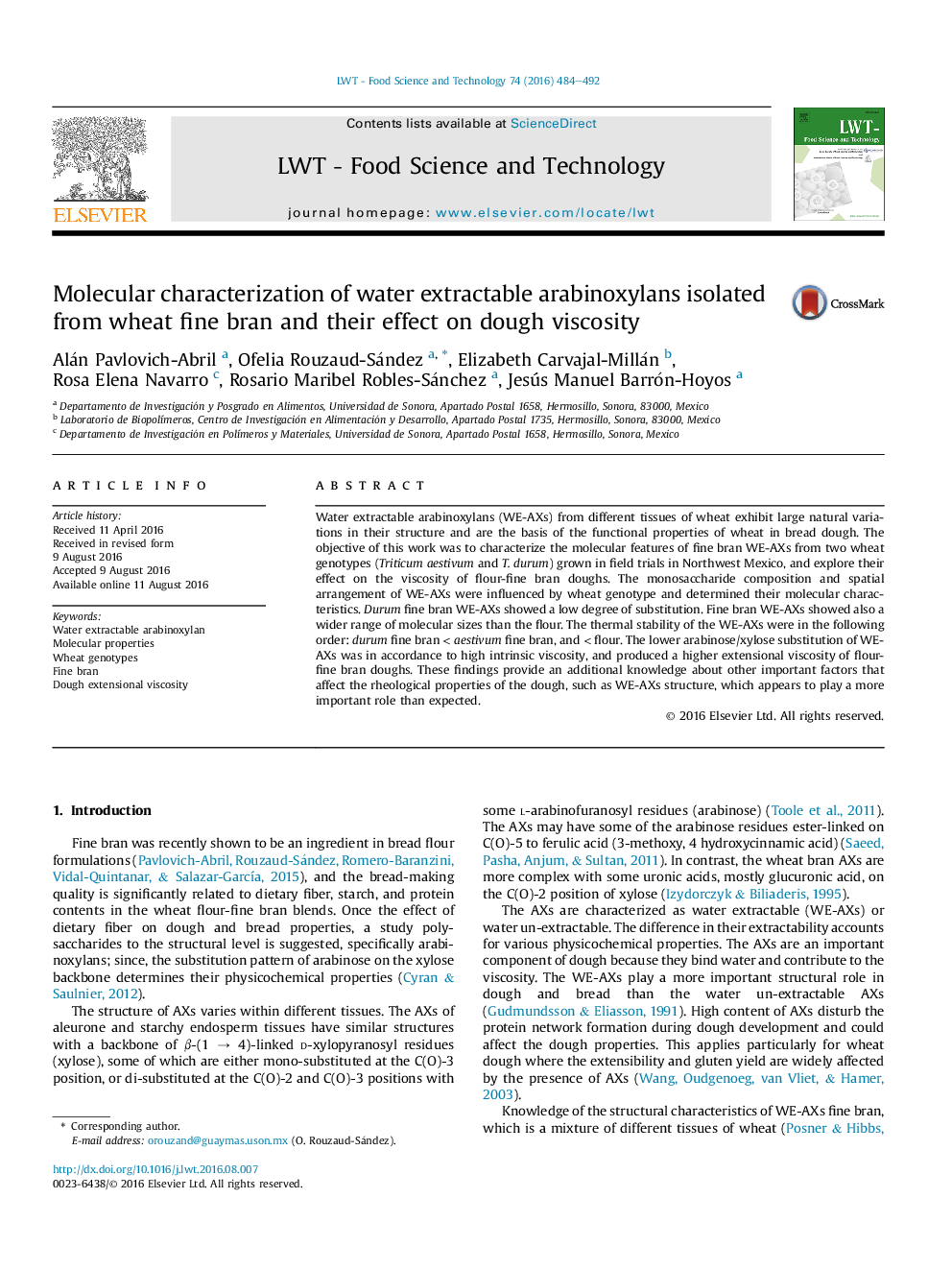| Article ID | Journal | Published Year | Pages | File Type |
|---|---|---|---|---|
| 4563486 | LWT - Food Science and Technology | 2016 | 9 Pages |
•The A/X molar ratios of the WE-AXs ranged between 0.40 and 1.07.•FT-IR spectra revealed mix β–(1–3, 1–4) linkages in xylose backbone from durum fine bran.•Compact conformation of WE-AXs was associated with high extensional viscosity.
Water extractable arabinoxylans (WE-AXs) from different tissues of wheat exhibit large natural variations in their structure and are the basis of the functional properties of wheat in bread dough. The objective of this work was to characterize the molecular features of fine bran WE-AXs from two wheat genotypes (Triticum aestivum and T. durum) grown in field trials in Northwest Mexico, and explore their effect on the viscosity of flour-fine bran doughs. The monosaccharide composition and spatial arrangement of WE-AXs were influenced by wheat genotype and determined their molecular characteristics. Durum fine bran WE-AXs showed a low degree of substitution. Fine bran WE-AXs showed also a wider range of molecular sizes than the flour. The thermal stability of the WE-AXs were in the following order: durum fine bran < aestivum fine bran, and < flour. The lower arabinose/xylose substitution of WE-AXs was in accordance to high intrinsic viscosity, and produced a higher extensional viscosity of flour-fine bran doughs. These findings provide an additional knowledge about other important factors that affect the rheological properties of the dough, such as WE-AXs structure, which appears to play a more important role than expected.
